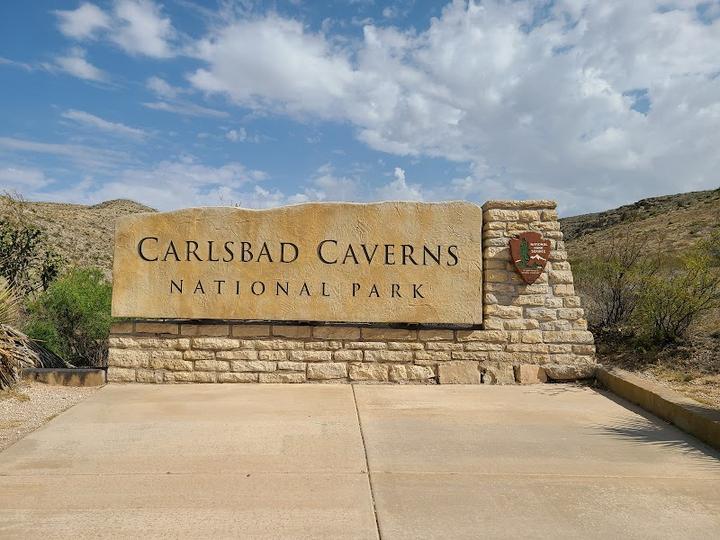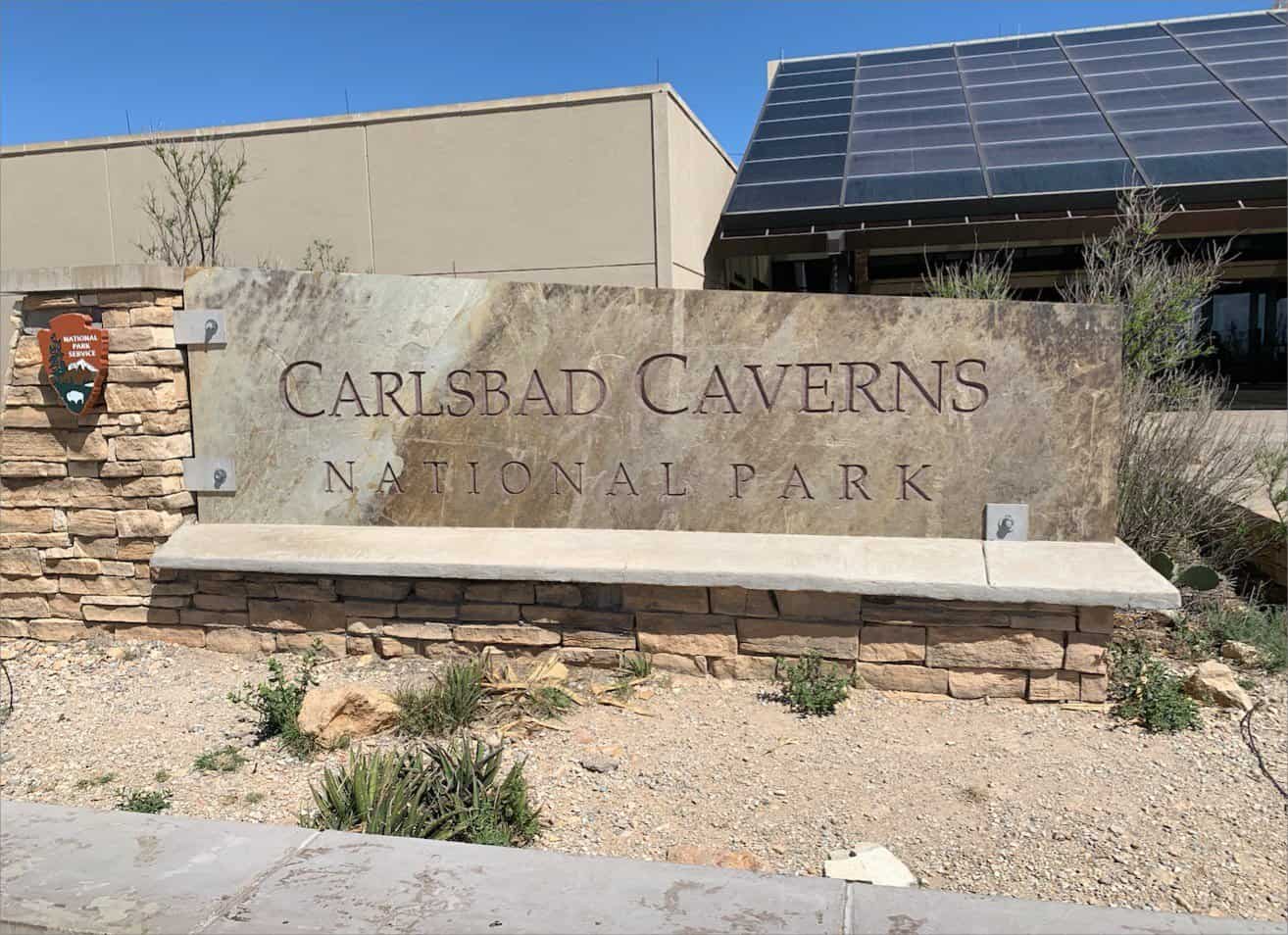Carlsbad Caverns National Park

About Carlsbad Caverns National Park
Carlsbad Caverns National Park: A Natural Wonder in New Mexico
Carlsbad Caverns National Park is a must-visit destination for nature lovers and adventure seekers. Located in the southeastern part of New Mexico, this national park is home to a unique underground world of limestone caves and caverns. The park is also known for its diverse ecosystem, including the bat population, which makes for a truly unforgettable experience.

The geology and formation of Carlsbad Caverns National Park is a marvel to behold. The park boasts over 119 caves and caverns, with the most famous being the Big Room. The Big Room is the largest single cave chamber in North America, and it features an incredible array of stalactites, stalagmites, and other spectacular rock formations. The park’s underground world was formed over millions of years through a complex process of erosion, deposition, and dissolution.
- Carlsbad Caverns National Park is a unique destination that offers visitors a chance to explore an underground world of limestone caves and caverns.
- The park is home to a diverse ecosystem, including a large bat population, which makes for a truly unforgettable experience.
- The geology and formation of the park’s underground world is a marvel to behold, with the Big Room being the most famous and largest single cave chamber in North America.
Geology and Formation
Carlsbad Caverns National Park is a unique geological wonder located near the Guadalupe Mountains in southeastern New Mexico. The park is famous for its extensive underground limestone chambers, speleothems, and rock formations.
Limestone Features
The geology of the park is dominated by the Permian Reef, specifically the Capitan Reef, which is one of the best-preserved, exposed Permian-age fossil reefs in the world [1]. The Capitan Reef is composed of fossilized limestone, which forms the foundation of the park’s underground chambers and formations. The limestone in the park is estimated to be around 250 million years old [1].
Sulfuric Acid Erosion
The formation of the underground chambers and formations in the park is attributed to the erosion of limestone by sulfuric acid. Hydrogen sulfide-rich water rose from the oil reservoirs as late as 12 million years ago and mixed with groundwater to form sulfuric acid [1]. Over time, the sulfuric acid dissolved the limestone, creating vast underground chambers and passageways.
Speleothems and Rock Formations
The park is home to a variety of speleothems, including stalactites, stalagmites, and columns. These formations are created by the deposition of minerals from groundwater as it drips from the cave ceilings or floors. The most famous speleothem in the park is the “Rock of Ages” column, which is over 50 feet tall [2]. The park is also home to the Lechuguilla Cave, which is known for its rare and delicate gypsum flowers [3].
Overall, the geology and formation of Carlsbad Caverns National Park is a fascinating example of the power of erosion and the beauty of underground formations.
References
[1] Geology Of Carlsbad Caverns National Park | U.S. Geological Survey
[2] Geologic Formations – Carlsbad Caverns National Park (U.S. National Park Service)
[3] Carlsbad Caverns National Park, New Mexico, USA – Geology Science
Biodiversity and Ecosystem
Carlsbad Caverns National Park is home to a diverse range of flora and fauna. The park’s ecosystem is comprised of desert and semi-desert grasslands, desert scrub and woodlands, montane chaparral, and montane woodlands. These habitats support diverse plant and animal species, including the Park’s famous bat populations.
Bat Populations
Carlsbad Caverns National Park is known for its Mexican free-tailed bat populations. These bats are known for their impressive nightly exodus from the cave, which can number in the thousands. The park is also home to other bat species, including the big brown bat and the cave myotis.
The park provides important year-round habitat for these bat populations. The large colonies of cave swallows and Brazilian free-tailed bats raise their young in Carlsbad Cavern, making it a vital nesting habitat for migratory species.
Desert Wildlife
In addition to the park’s bat populations, Carlsbad Caverns National Park is home to a variety of desert wildlife. The park is home to mule deer, rattlesnakes, and a variety of bird species. The desert scrub and woodlands provide habitat for a range of small mammals, including rodents and rabbits.
The park’s ecosystem is also home to a variety of microbes. These microscopic organisms play a vital role in the park’s ecosystem, breaking down organic matter and cycling nutrients back into the soil.
Overall, Carlsbad Caverns National Park’s biodiversity and ecosystem are a testament to the importance of protecting and preserving our natural resources.
Visitor Experience
Carlsbad Caverns National Park offers visitors a unique experience to explore the natural wonders of the underground world. The park has a variety of tours and trails to suit different interests and abilities.
Tours and Trails
Visitors can explore the caves on their own or take a ranger-guided tour. The Natural Entrance Tour takes visitors on a 1.25-mile hike down to the cave’s main entrance, while the Big Room Tour is a 1.5-mile loop through the largest cave chamber in North America. The park also offers a variety of ranger-guided tours, including the King’s Palace Tour and the Lower Cave Tour. Visitors should wear proper footwear for hiking and be prepared for varying temperatures and humidity levels inside the caves.
Amenities and Accessibility
The park’s visitor center offers a park film, gift shop, and restaurant. The visitor center is also the starting point for all tours and trails. The park has an elevator that takes visitors down to the cave’s main entrance, making the caves accessible to people with mobility issues. The park offers timed entry reservations for the elevators to ensure visitors can enter the cave in a safe and timely manner.
Observing Natural Phenomena
Carlsbad Caverns National Park offers visitors the opportunity to observe natural phenomena such as the bat flight program and the night sky. The park’s bat flight program takes place from May to October and allows visitors to witness thousands of bats flying out of the caves at sunset. The park also offers night sky programs, where visitors can stargaze and learn about the park’s unique dark sky environment.
In conclusion, Carlsbad Caverns National Park offers visitors a unique and memorable experience to explore the natural wonders of the underground world. Visitors can choose from a variety of tours and trails, enjoy amenities and accessibility, and observe natural phenomena.
Conservation and Research
Carlsbad Caverns National Park is not only a tourist destination but also a hub of conservation and research. The National Park Service is responsible for preserving and protecting the park’s natural and cultural resources.
Historic Preservation
The park has been designated as a National Register of Historic Places and a World Heritage Site due to its unique geology and cultural history. The Caverns Historic District within the park has been listed on the National Register of Historic Places since 1995. The district includes the visitor center, park housing, and other structures built by the Civilian Conservation Corps in the 1930s.
Scientific Studies
Carlsbad Caverns National Park also serves as a research site for various scientific studies. The Guadalupe Ridge is home to unique flora and fauna, and the park’s wilderness area provides an excellent opportunity for ecological research. The park’s cave systems are also a significant area of study for geologists and biologists.
The park’s climate is another area of research, as it experiences extreme temperatures and occasional flooding. The park has implemented measures to mitigate the impact of climate change, including the installation of solar panels to reduce its carbon footprint.
In conclusion, Carlsbad Caverns National Park is not only a fascinating tourist destination but also a significant hub for conservation and research. The park’s unique geology and cultural history make it a valuable resource for scientific studies and historic preservation.
Frequently Asked Questions
What are the operating hours for Carlsbad Caverns National Park?
Carlsbad Caverns National Park is open every day of the year except for Thanksgiving, Christmas, and New Year’s Day, weather and road conditions permitting. The park’s hours vary by season, but the caverns are usually open from 8:00 am to 5:00 pm. Visitors should check the park’s website or call ahead to confirm current hours of operation.
How can I purchase tickets for a tour at Carlsbad Caverns National Park?
Tickets for Carlsbad Caverns can be purchased at the visitor center, located near the park entrance. A general admission ticket is required for all visitors entering the cavern. Additional tours, such as the King’s Palace Tour and the Lower Cave Tour, require separate tickets and reservations. It is recommended to book these tours in advance, especially during peak season.
What types of wildlife can be seen at Carlsbad Caverns National Park?
Carlsbad Caverns National Park is home to a variety of wildlife, including bats, rodents, reptiles, and birds. The park is famous for its bat population, with over 17 species of bats inhabiting the caverns. Visitors may also spot mule deer, coyotes, and black bears in the surrounding wilderness areas.
Are there any restrictions on photography within Carlsbad Caverns?
Photography is allowed within the caverns, but flash photography and tripods are not permitted on guided tours. Additionally, drones are not allowed in the park without a special permit. Visitors should be mindful of other guests and avoid blocking pathways or creating disturbances while taking photos.
What are the best times of year to visit Carlsbad Caverns National Park?
Carlsbad Caverns National Park can be visited year-round, but the best time to visit is during the spring and fall when the weather is mild and crowds are smaller. Summer temperatures can be hot, and winter weather can be unpredictable, so visitors should come prepared with appropriate clothing and gear.
What accommodations are available near Carlsbad Caverns National Park?
There are several lodging options available near Carlsbad Caverns National Park, including campgrounds, RV parks, and hotels. The park also offers several backcountry camping options for visitors interested in overnight backpacking trips. Visitors should check the park’s website for a list of nearby accommodations and make reservations in advance.



